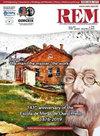Agility based software development for truss design
Q3 Earth and Planetary Sciences
引用次数: 0
Abstract
This article describes the development of an application for structural analysis of tubular trussed girders. Such structural components are widely used on roofs for which long span components are a necessity, e. g., supermarkets, distribution centers, etc. The application supplies hints to the project engineers as to the most economic solutions for a combination of span, loads, and other characteristics. Software development techniques are also explored. Such techniques can be divided into two large groups. In the first one, which is most widely known and used, software development complies with very rigid planning, where processes are more important than skills. This methodology is known as the Rigorous Development System (RDS). The second group, called Agile Development System (ADS), is conceived as an option for those not aligned with the RDS rules. This text describes the experience of an ADS based software development for truss design. In Section 2, the basis of ADS is presented. Section 3 describes the truss design application and civil engineering related concepts. Section 4 brings an example illustrating the application. Conclusions are in Section 5.基于敏捷的桁架设计软件开发
本文介绍了一种用于管状桁架梁结构分析的应用程序的开发。这种结构构件广泛应用于需要大跨度构件的屋顶,如超市、配送中心等。该应用程序为项目工程师提供了关于跨度,载荷和其他特性组合的最经济解决方案的提示。还探讨了软件开发技术。这些技术可以分为两大类。在第一种方法中,软件开发遵循非常严格的计划,其中过程比技能更重要。这种方法被称为严格开发系统(RDS)。第二组,称为敏捷开发系统(ADS),被认为是那些不符合RDS规则的人的选择。本文介绍了基于ADS的桁架设计软件开发的经验。在第二节中,介绍了ADS的基础。第三节介绍了桁架设计的应用及土木工程的相关概念。第4节提供了一个示例来说明该应用程序。结论见第5节。
本文章由计算机程序翻译,如有差异,请以英文原文为准。
求助全文
约1分钟内获得全文
求助全文
来源期刊

Rem-Revista Escola De Minas
工程技术-工程:土木
自引率
0.00%
发文量
0
审稿时长
6-12 weeks
期刊介绍:
REM – International Engineering Journal (antigua REM – Revista Escola de Minas) es la primera revista técnica de Sudamérica. Fue fundada en enero de 1936 por los estudiantes de la Escuela de Minas de Ouro Preto y desde entonces se ha especializado en la publicación de artículos en las áreas de la Ingeniería Civil, Geología, Metalurgia y Materiales y, Minería y Mecánica y Energía.
Su objetivo es servir como un medio de publicación para los trabajos técnicos y científicos originales de investigadores nacionales y extranjeros en esas áreas. Contribuciones originales (artículos y cartas) son aceptadas. Artículos de revisión dependen de la invitación y/o análisis de los Editores.
El envío de artículos para su publicación implica que el trabajo no ha sido publicado previamente, que no está siendo presentado para su publicación en otra revista y no se publicará en otro lugar, en la misma forma, sin el permiso, por escrito, de los Editores/Autores.
 求助内容:
求助内容: 应助结果提醒方式:
应助结果提醒方式:


